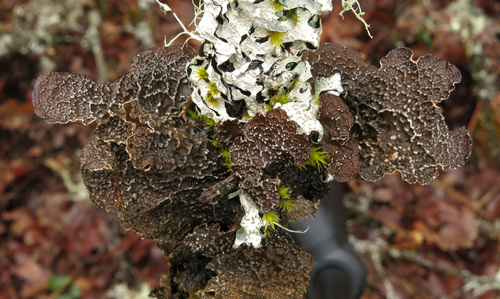Click on Characteristic name for explanation. Click on image for larger version.
|
Lobaria anomala
| Overview
| | PNW Range: | | | West side | Common
| | East side | Rare
| | Immediate coast | Common
| | Alpine or subalpine | None
| | Habitat: | Low- to mid-elevation moist forests, including riparian areas, Willamette Valley hardwood forests (including oak savannas and ash swamps), and sporadically in mountain conifer forests.
| | Substrate: | Bark and wood, most often on deciduous trees and shrubs, occasional on conifers; rarely on rock.
| | Comments: | Previously known as Pseudocyphellaria anomala, but DNA evidence showed that it belonged in Lobaria, not Pseudocyphellaria.
| | Synonymy: | Pseudocyphellaria anomala
|
|

Habit
|
|
|
|
|